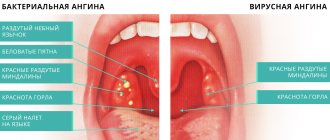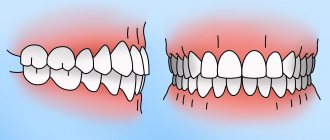Types of foreign bodies that can damage gums
A splinter in the oral cavity is caused by:
- habit of chewing pencils and pens;
- inaccurate eating of seeds;
- picking teeth with wooden toothpicks.
A foreign body in the gum can cause both minor discomfort and serious signs of inflammation.
Splinter in the gum
When the gums are damaged by a splinter, sharp pain occurs. When examining the mouth, a foreign body is visible, half of which is located inside the periodontium, and the other half lies on the surface of the mucous tissue. You can get a splinter in your gums in everyday life:
- if you use a toothpick carelessly;
- when eating popcorn, sunflower seeds and unboned fish;
- with severe destruction of a carious tooth;
- if an instrument breaks during dental treatment.
After a person picks the gum with a toothpick, the tissue around the mole turns red, swells and bleeds. Unpleasant symptoms of damage are a good reason to visit a doctor.
Fish bone stuck in gum
The most common cause of a splinter in the mouth is chewing fish with bones. Thin small bones extend deep under the gum and cause sharp pain when pressed.
In 78% of cases, this type of splinter in the gum occurs in childhood. Children cannot remove all the bones from fish on their own, and to prevent unpleasant consequences, adults need to take care of the safety of the prepared dishes before eating.
Tooth root cyst: what is it and why is it dangerous?
The author of the article is dentist-surgeon-implantologist A. A. Kipel.
A cyst is a signal that the process of destruction of living tissue in the oral cavity is in full swing. If the patient ignored preventive examinations and consulted a doctor only when pain appeared, the tumor had already reached serious proportions. It will have to be removed surgically. Visit Stoma specialists have performed hundreds of such operations and were able to save even the most “hopeless” teeth.
In the early stages, the danger can be neutralized without the intervention of surgeons - using conservative treatment methods. But for this, you need to know what a cyst is, how it arises and develops.
Cyst development
If an infection gets into the bone tissue of a tooth, it begins to break down. The injured cells die and a cavity appears in their place. The body does its best to resist inflammation and builds up a protective film around it - a barrier that prevents the further spread of infection. The cavity at the top of the tooth root, surrounded by a dense membrane, is a cyst. Inside it is filled with exudate - bacteria, secretions from blood vessels with a high content of leukocytes and dead bone cells. Unfortunately, even under the membrane the cyst continues to grow. The inflammation seems to be eating away at the bone from the inside, and if no action is taken, it simply won’t remain under the tooth.
The bone cavity can be of any size. The longer the infection remains in the bone, the larger the cyst grows. The neoplasm develops in 3 stages. The division is conditional. The stages of cyst development are determined by its size and monitored on an x-ray, but only a histologist can reliably determine them.
The first stage is granuloma. It grows on the root of the tooth quite quickly and does not exceed 5 mm in diameter. The next one is cystogranuloma. This formation is not cavitary, without exudate, but is already surrounded by a membrane characteristic of a cyst. The coverage does not exceed 8 mm. The final stage of the development of the disease is a cyst, which is a cavity larger than 9 mm. The last 2 phases are irreversible without surgical treatment.
Reason for appearance
Cysts on the top of the tooth are the result of inflammation that has become chronic. There are known cases of their degeneration into malignant tumors.
Even a small inflammatory process in the oral cavity can lead to bone damage and the formation of a depression in it.
How does a tooth root cyst develop?
Affects the formation of cysts and the general condition of the body. Most often, cysts form in women over 45 years of age.
The main reason for the appearance of granulomas and cysts is poor-quality or untimely treatment of caries. And you can avoid it only by consulting a doctor in time.
Symptoms of a foreign body in the gum
The moment a bone gets stuck in the gum is not always noticeable to a person. The first signs of damage appear upon repeated consumption of food or immediately after the development of the inflammatory process.
Symptoms of a splinter in the gum near a tooth include:
- redness of the mucous membrane around a foreign body;
- swelling of the gums;
- the formation of a translucent growth with purulent contents;
- the appearance of an abscess at the site of injury;
- itching in the inflamed area;
- sharp pain, aggravated by mechanical stimuli.
The mouth contains a large amount of pathogenic and conditionally pathogenic microflora. When there is wound damage, bacteria quickly penetrate the wound and begin active reproduction. In this case, inflammatory diseases of the oral cavity develop.
To prevent unwanted consequences, if you find a foreign body in your mouth, you should immediately consult a dentist for medical help.
Like a bone in the throat, Kezha A.S. Doctor - otorhinolaryngologist of clinic No. 1
One of the oldest and perhaps most common otolaryngological procedures is the removal of foreign bodies from the throat. Most often, foreign bodies enter the pharynx along with food (fish and meat bones, glass fragments, pieces of wire, pieces of meat, lard). Foreign bodies can also be objects that accidentally get into the mouth (pins, nails, buttons), or dentures. The entry of foreign bodies into the pharynx can be caused by such predisposing factors as fast eating, sudden laughter or coughing while eating, lack of teeth or the presence of dentures, as well as the habit of holding small objects in the mouth.
A significant proportion of all foreign bodies in the pharynx and esophagus in adults are bones, and problems most often arise from fish bones. It is necessary to pay attention to some issues that concern patients.
Should you go to the doctor if you choked on a bone?
You should go to the doctor immediately if you have swallowed any hard bone (chicken, beef, large rigid fish bone, etc.). This is an immediate life-threatening emergency. The damage caused by a sharp piece of bone can be compared to a piece of glass or a blade. A chicken bone fragment cuts the wall of the pharynx or esophagus with almost the same efficiency.
It is worth mentioning separately the small flexible fish bones that most often get stuck in the throat. In this case, a medical examination is also necessary, but in a situation where it is extremely difficult to see a doctor immediately, the examination may be delayed, but not more than for a day. The likelihood of complications developing in this situation is quite low.
If the presence of a bone in the throat is felt, but the doctor finds nothing?
Very often, small bones pass through in transit, only scratching the mucous membrane. In this case, the doctor does not find a foreign body, and sometimes even damage to the pharyngeal mucosa, but the patient may be bothered by a tingling sensation in the throat for 2-3 days. To reduce discomfort, it is enough to follow a diet and gargle with antiseptic solutions.
In some cases (restless behavior, alcohol intoxication in the patient), examination of the pharynx may be difficult. In order to clarify the diagnosis, the doctor, if necessary, prescribes an endoscopic (FGDS) or X-ray examination of the pharynx, but more often, if complaints persist, he recommends a second visit after two to three days.
The greatest difficulty in diagnosing foreign bodies in the pharynx are small fish bones, which they tried to extract using traditional methods, for example, by swallowing bread crusts.
In some situations, if you're lucky, the bread crust can carry a fish bone with it. But, as a rule, this does not happen. A hard bread crust, especially if poorly chewed, can itself injure the mucous membrane. But it is much more dangerous when part of the bone located outside the pharyngeal mucosa breaks off, and it becomes much more difficult to find, much less remove, the remaining piece.
It turns out that the bone fragment is completely immersed in the tissue and is not visible upon examination. In this case, events can develop differently. The first option is quite rare - under the most favorable conditions, a small fragment of bone can dissolve without causing an inflammatory reaction. In the second option, the most likely, purulent inflammation will develop in the area of bone penetration - an abscess, which is manifested by a significant increase in body temperature, difficulty swallowing, and general malaise. The danger is that if you do not seek medical help, you may develop such serious complications as phlegmon of the neck and mediastinitis. Such complications are very difficult to cure, and often end in the death of the patient. With timely involvement of medical assistance, the abscess will be opened surgically and the problem will be resolved without the development of complications.
Doctor - otorhinolaryngologist of clinic No. 1 Kezha A.S.
How to diagnose a splinter in the gum or a bone from a fish
Splinters that appear in the gums from a toothpick, fish bones or an old filling force their owner to stick his tongue into the damaged area. You can see the smallest particles in your mouth at home. For this purpose, you will need a clean mirror and light. The examination should be carried out in clean conditions, and hands should be treated with alcohol-based antiseptics.
To prevent infection, the mouth is rinsed with Miramistin or an aqueous solution of chlorhexidine.
When the patient identifies the bone on his own, he uses all methods to remove it from the gums. Unfortunately, removing a foreign body at home is not always successful.
Incorrect bone removal technique further injures the tissue and provokes the development of purulent inflammation. In such cases, you need to trust the dentist and follow all the recommendations he gives.
If the splinter in the upper gum or lower jaw is stuck deep and cannot be seen, an x-ray examination is prescribed.
Where do deposits appear in the gum mucosa?
Sometimes there is a sharp pain in one place in the mouth for no apparent reason. The person notes with bewilderment that it does not sink into the roots of the teeth and seems to lie on the surface. This is how a small thorn makes itself known. This is disconcerting: for most people, it comes as an unpleasant surprise. It is easy to get it in everyday life:
- if you handle a toothpick carelessly when removing food debris;
- when a tooth is chipped, which crumbles into tiny particles due to caries;
- when eating fish with bones, sunflower seeds or cracking nuts with teeth;
- in case of careless work of the dentist and damage to the instrument.
The problem often occurs in people who have the bad habit of holding a match in their mouth or chewing the cap of a pen or pencil. The thinnest pieces of wood or plastic can go deep under the mucous membrane and cause complications.
The most common cause is the sharp tip of a toothpick. Dentists have long warned that this item is not the best way to clean the oral cavity after eating food. Many manufacturers use low-quality, low-grade wood for their manufacture. It crumbles easily and breaks off unnoticed by humans. Such a splinter can remain motionless for a long time, but almost always begins to break out after a few days.
Fish bone in gum
The second common way to encounter this unpleasant problem is to visit the dentist's office. Sometimes unscrupulous dentists use equipment and instruments from little-known companies. There is always a risk of a defective nozzle or a completely understandable process of “physical fatigue of the metal.” During complex canal cleaning or gum treatment, the smallest piece can break off and enter the soft tissue.
No less often, worried parents of infants turn to the dentist. A splinter in the gum is a real problem in the first year of life. The child begins to actively crawl and taste all the objects around him. As soon as parents are distracted, the most incredible things end up in their mouths: wooden cubes or puzzles, pads stuffed with husks, or pencils. Mom rarely notices the particle on her own, and associates the redness of the mucous membrane with the eruption of the next molars.
How to remove bone from gum
As a rule, the fish bone is clearly visible in the mouth and can be removed using non-sharp tweezers. Before this, the instrument must be treated with an antiseptic, and hands must be washed with soap and wiped with ethyl alcohol.
The bone should be removed with careful and slow movements so that the fragment does not remain in the gum. After removing the splinter, the wound is treated with a 0.05% solution of chlorhexidine or hydrogen peroxide. It is not advisable to chew on the inflamed side of the mouth for several hours after the procedure.
Methods for removing splinters from gums
Removing a toothpick
If the particle is clearly visible in the front of the jaw, you can remove it using ordinary tweezers. Before use, wipe it with alcohol or Chlorhexidine, wash your hands with soap. You should pull it out as carefully as possible without jerking so that the tip does not remain in the wound. Another effective folk method:
- a piece of bread the size of a matchbox is sprinkled with salt, chewed a little, and rolled into a ball;
- the crumb is leveled on an adhesive plaster;
- apply it to the splinter for 30–40 minutes, press down a little;
- removed along with a piece of wood or metal.
In a dental office, thin special tweezers are also used. If an abscess has formed, a careful opening is performed with a needle. The wound is cleaned and disinfected, and drainage is inserted if necessary. To prevent the infection from spreading throughout the body, the patient is recommended to take antibiotics for several days:
- Biseptol;
- Lincomycin;
- Cephalexin;
- Clarithromycin.
To eliminate the abscess, Metrogyl Denta ointment or Solcoseryl cream is rubbed into the gum, and a cotton swab with Streptocide powder is applied. The oral cavity must be treated with one of the solutions or infusions:
- a spoonful of soda diluted in warm water;
- decoction of chamomile, sage or St. John's wort;
- dissolve sea salt and a little iodine in water;
- The gums are wiped with alcohol tincture of calendula or propolis.
It is better not to lead the situation to purulent inflammation, which can affect the roots of the teeth or spread to the jaw bones. To avoid such a case, it is better to abandon the frequent use of toothpicks in favor of a more convenient thread. After eating fish or seeds, rinse your mouth thoroughly for several minutes.










